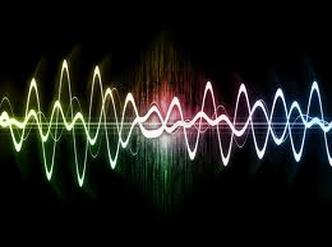 For mobile phone users, a flat battery or a lost charger are among the frustrations of modern life. Now new research promises a way to recharge phones using nothing but the power of the human voice. Electrical engineers have developed a new technique for turning sound into electricity, allowing a mobile to be powered up while its user holds a conversation. The technology would also be able to harness background noise and even music to charge a phone while it is not in use. However, there could be a downside to the innovation, if it gives people a new reason to shout into their phones as they attempt to squeeze in every extra bit of power they can. Dr Sang-Woo Kim, who has been developing the design at the institute of nanotechnology at Sungkyunkwan University in Seoul, South Korea, said: “A number of approaches for scavenging energy from environments have been intensively explored." “The sound that always exists in our everyday life and environments has been overlooked as a source. This motivated us to realize power generation by turning sound energy from speech, music or noise into electrical power.
“Sound power can be used for various novel applications including cellular phones that can be charged during conversations and sound-insulating walls near highways that generate electricity from the sound of passing vehicles. “The latter development would have the additional benefit of reducing noise levels near highways by absorbing the sound energy of vehicles.” The technology uses tiny strands of zinc oxide sandwiched between two electrodes. A sound absorbing pad on top vibrates when sound waves hit it, causing the tiny zinc oxide wires to compress and release. This movement generates an electrical current that can then be used to charge a battery. A prototype of the technology was able to convert sound of around 100 decibels – the equivalent of noisy traffic – to generate 50 millivolts of electricity. “This is not enough to charge a phone properly, but Dr Kim and his colleagues hope that by altering the material the wires are made from they will be able to produce more energy at lower sounds levels. He said: “Our current output performance can be applied to various electronic devices with low-power consumption such as self-powered sensors and body-implantable tiny devices. We believe that we can realise more efficient sound-driven nanogenerators.” Researchers and some manufacturers have already started looking at using ‘energy scavenging’ as a way of powering portable electronic devices. Scientists have developed devices that can use the heartbeat to power MP3 players, while Nokia has filed a patent for a device which harvests energy from movement, much like a kinetic energy powered watch. Posted by Zach Royer | 9:15 PM HAST | May 31, 2011 | Please share and like! Related Articles by Apparently Apparel: Nocera: One Small Leaf Could Electrify an Entire Home Video: Dirty Electricity and the Link to Cancer in Children Video: Nanotechnology Hybrid Could Combine Mind and Machine
0 Comments
Your comment will be posted after it is approved.
Leave a Reply. |
News Watch
Mind-opening news articles, editorials, videos & apparel that inspire our readers and help liberate them from the status quo. Stay informed.
Write For UsSpace WatchTop NewsNews Watch Categories
All
|
|
|
HAVE A TIP OR STORY TO TELL? JOIN TODAY & SHARE YOUR STORY!
If you have a breaking news tip or idea, please email: [email protected] Apparently Apparel® is a registered trade name and part of the ZOAT International® brands network. © 2007-2023. All Rights Reserved. Privacy Policy. All art & news content posted on this site is commentary or opinion and is protected under Free Speech. ApparentlyApparel.com is not responsible for content written by contributing artists, authors or news feeds. The information on this site is provided for educational and entertainment purposes only. It is not intended as a substitute for professional advice of any kind. ApparentlyApparel.com assumes no responsibility for the use or misuse of this material.
|
|






